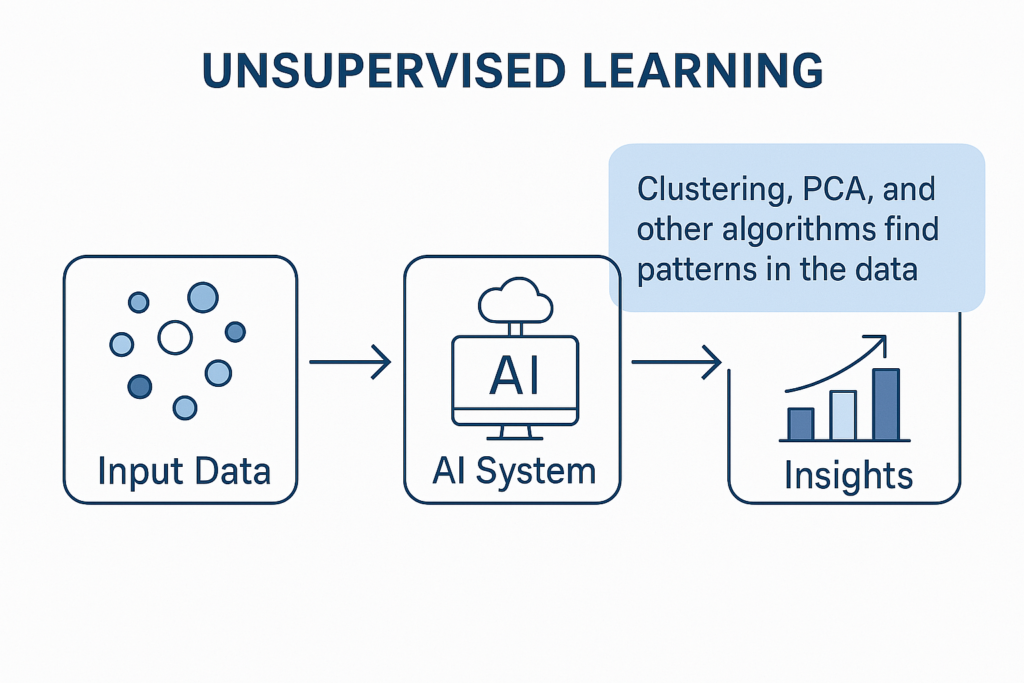Unsupervised learning represents a significant stride in the field of artificial intelligence, particularly in enhancing the capabilities of artificial training systems. Unlike supervised learning, which relies on labeled data to teach models, unsupervised learning explores data without predefined labels, allowing systems to uncover hidden structures and patterns autonomously. This capability is particularly transformative for sectors that handle vast amounts of untagged data, offering a way to glean insights where manual labeling would be impractical or impossible.
Enhancements Brought by Unsupervised Learning
Efficient Data Handling
One of the core strengths of unsupervised learning is its ability to manage large datasets efficiently. By detecting patterns and correlations without human oversight, it reduces the necessity for extensive manual intervention, making it suitable for applications like customer segmentation, anomaly detection, and complex decision-making processes.
Discovery of Natural Data Patterns
Unsupervised learning algorithms such as k-means clustering, hierarchical clustering, and Principal Component Analysis (PCA) play pivotal roles in identifying the inherent groupings and structures within data. These algorithms help artificial systems categorize data in meaningful ways, improving their performance in tasks like market analysis, risk management, and user behavior prediction.
Practical Applications in Various Industries
Business and Marketing
In the business sector, unsupervised learning helps companies understand their customer base by segmenting users according to similarities in purchasing behavior or preferences. This segmentation allows for more targeted marketing strategies and personalized customer service, leading to increased customer satisfaction and loyalty.
Healthcare
In healthcare, unsupervised learning techniques identify patterns and anomalies in patient data that might not be visible otherwise. This capability can lead to early diagnosis of diseases, personalized treatment plans, and better patient outcomes by highlighting unusual patient records that require further investigation.
Cybersecurity
For cybersecurity, unsupervised learning is crucial for detecting unusual network patterns that may indicate a security breach. By continuously analyzing network traffic and comparing it to established patterns, these systems can flag anomalies that suggest potential threats, allowing for quicker response times.
Challenges and Future Directions
Despite its advantages, unsupervised learning comes with its set of challenges. Determining the number of clusters in a dataset, choosing the right dimensions for reduction, and validating the outcomes of unsupervised models are complex issues that often require sophisticated solutions and expert knowledge. Additionally, the absence of labeled data can sometimes lead to less precise outcomes, making it difficult to gauge the effectiveness of the learning process.
Looking forward, the integration of unsupervised learning with other AI techniques like reinforcement learning and supervised learning is likely to be a focus, aiming to create hybrid models that leverage the strengths of each approach. Such advancements could further refine the capabilities of AI systems, making them more adaptable and efficient.
What is unsupervised learning in artificial training systems?
Unsupervised learning is a type of machine learning that allows artificial systems to learn from data without needing predefined labels or categories. It helps these systems discover natural patterns and improve autonomously by analyzing the underlying structure of the data.
How does unsupervised learning improve artificial training systems?
Unsupervised learning enhances artificial training systems by enabling them to process large volumes of data efficiently, identify hidden patterns, and adapt to new data without explicit programming. This leads to more effective and adaptive AI models.
What are some common applications of unsupervised learning?
Common applications include customer segmentation in business, anomaly detection in cybersecurity, and pattern recognition in healthcare. These applications leverage unsupervised learning to analyze complex datasets and derive meaningful insights.
What are the main challenges associated with unsupervised learning?
The main challenges include determining the optimal number of clusters in data, choosing the right dimensions for feature reduction, and validating the outcomes without labeled data. These challenges require sophisticated analytical techniques and domain expertise.
What is the future of unsupervised learning in AI?
The future of unsupervised learning involves integrating it with other learning paradigms to create more robust and versatile AI systems. Advances in computational power and algorithmic design are expected to further enhance its capabilities and applications.
Conclusion
Unsupervised learning continues to be a cornerstone of innovation in artificial intelligence, driving improvements across a myriad of applications. As technology evolves, the potential for unsupervised learning to transform artificial training systems grows, promising more intelligent, autonomous, and efficient AI solutions. The ongoing research and development in this field not only enhance current technologies but also pave the way for future breakthroughs that could redefine what machines can learn on their own.


